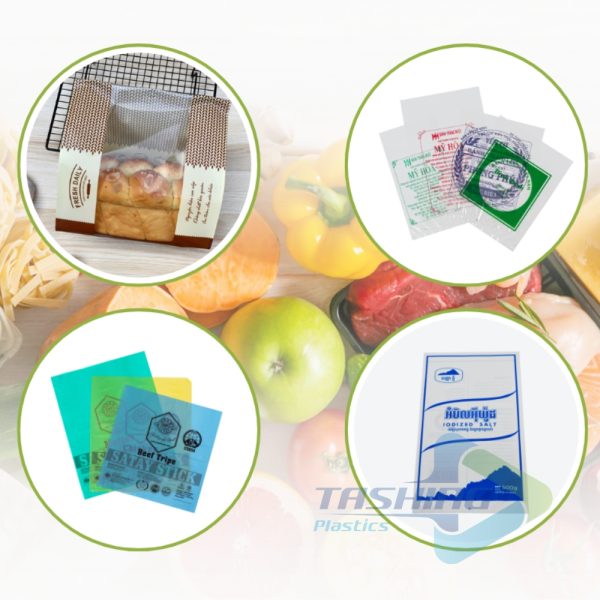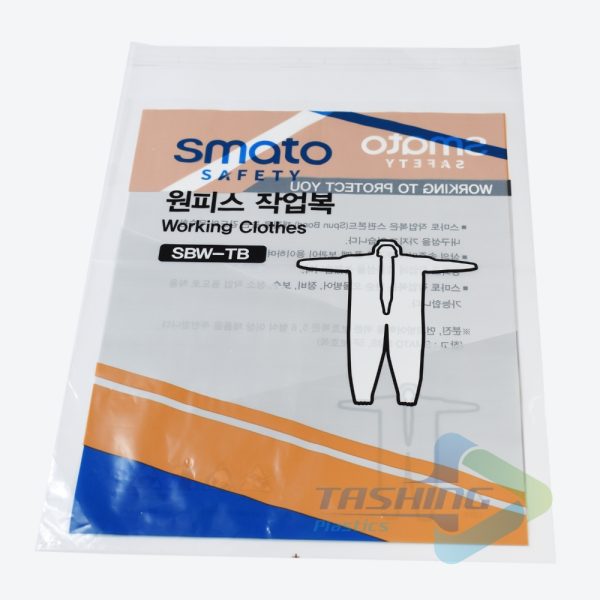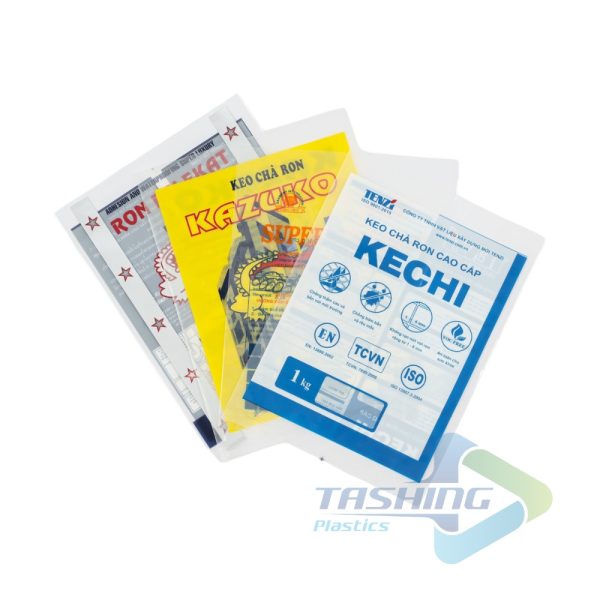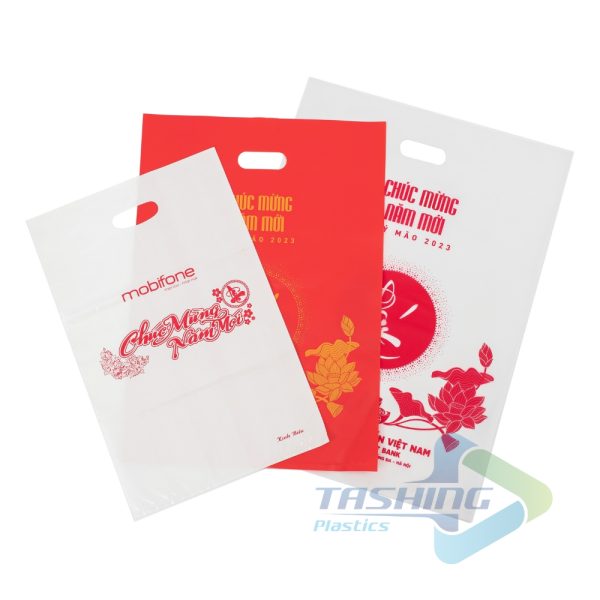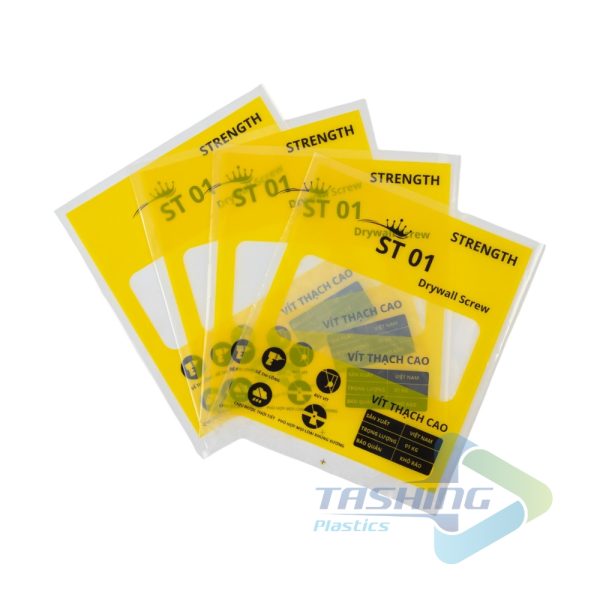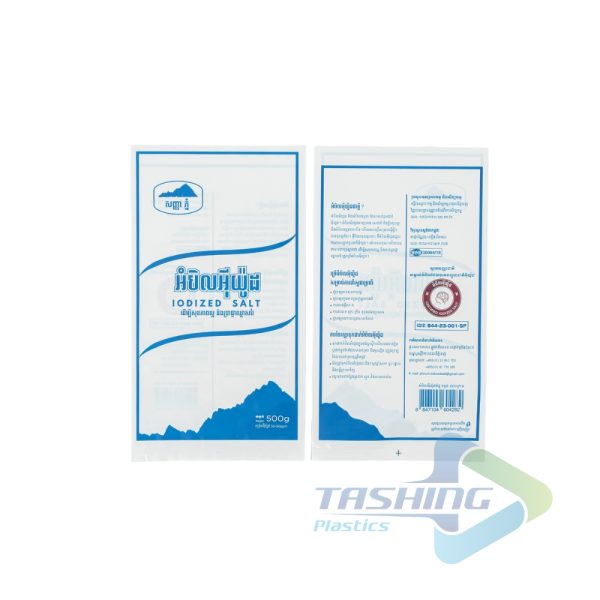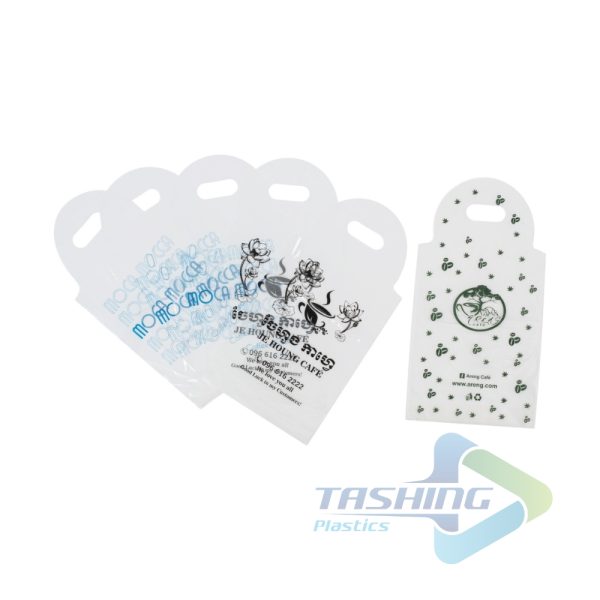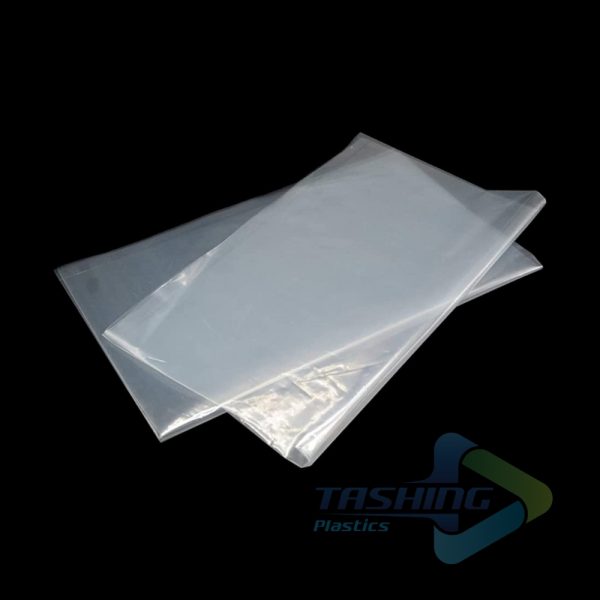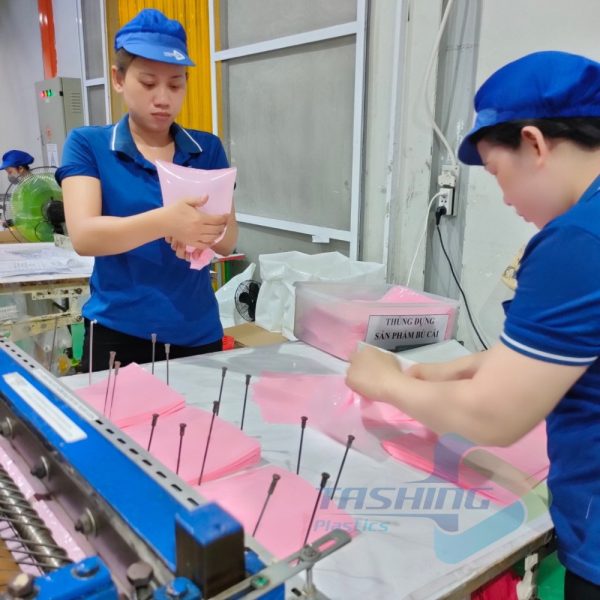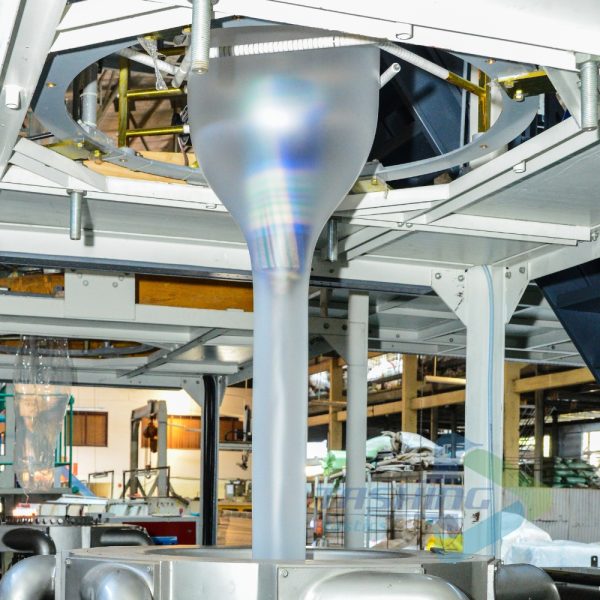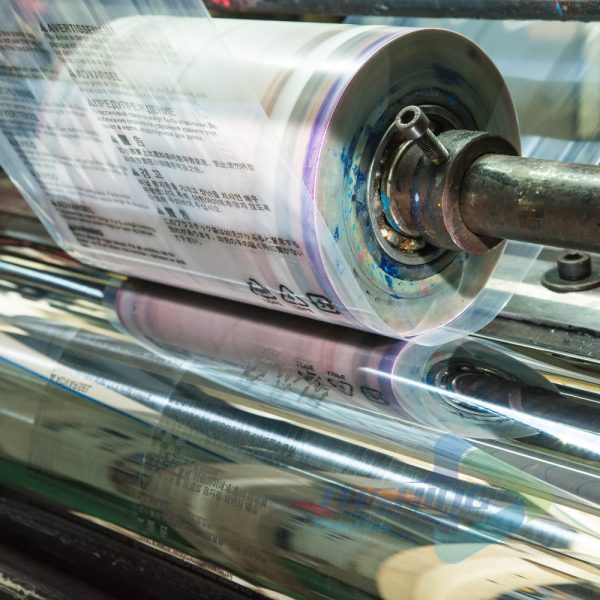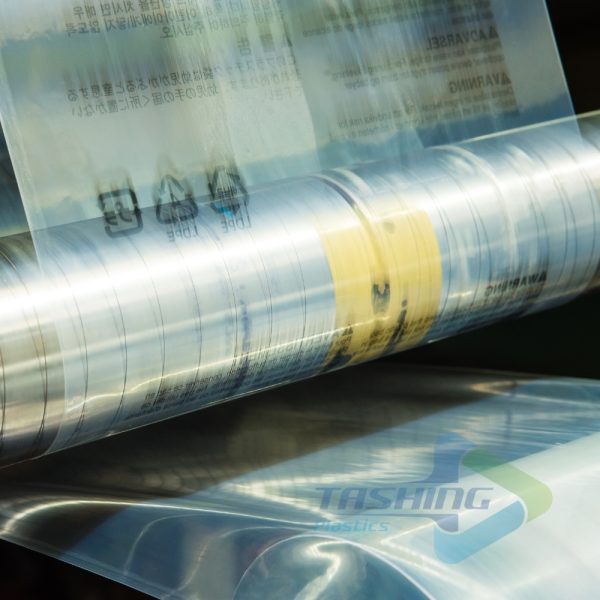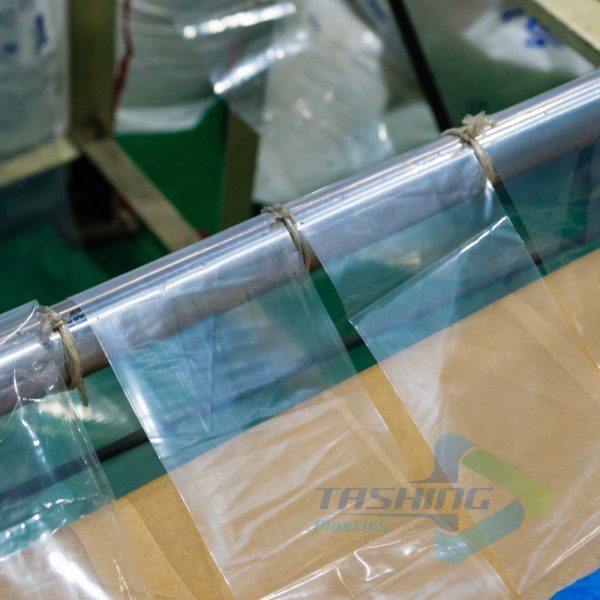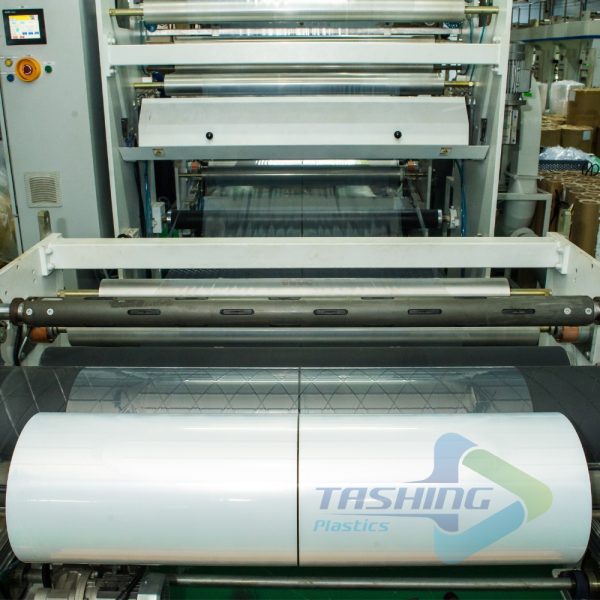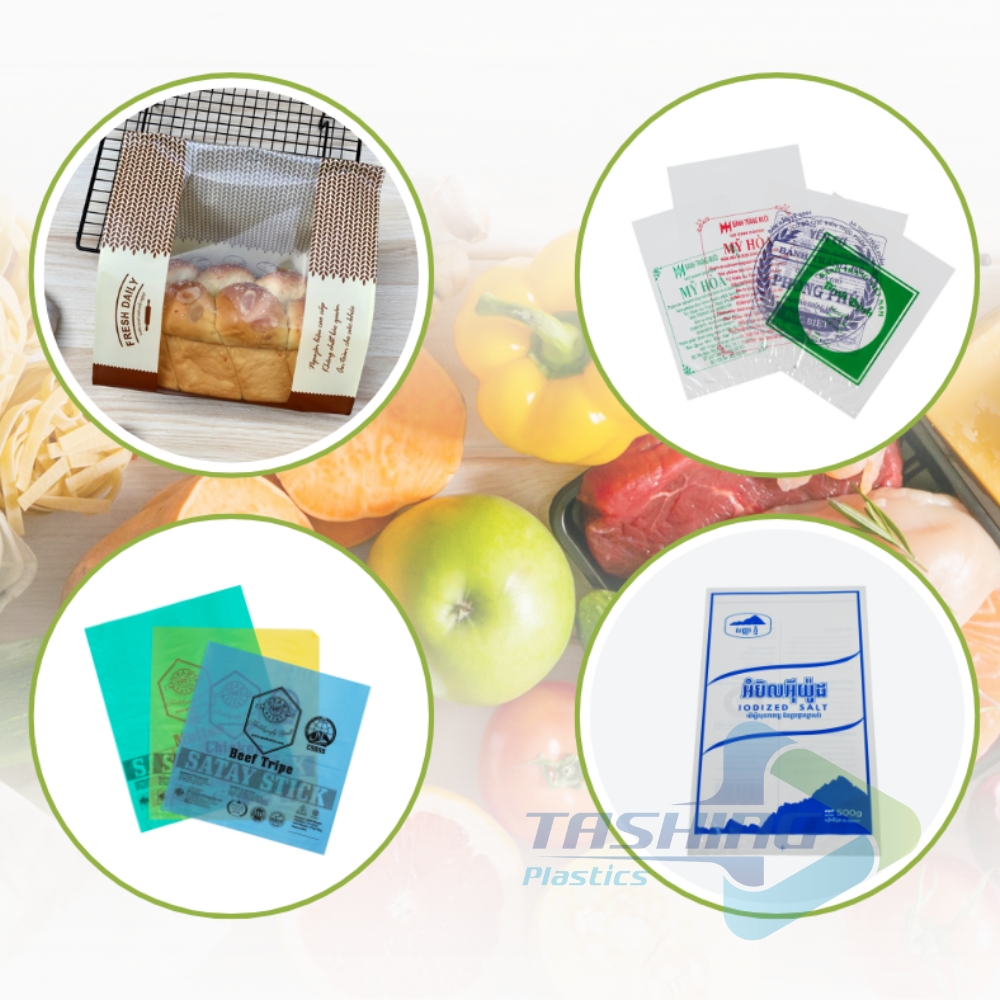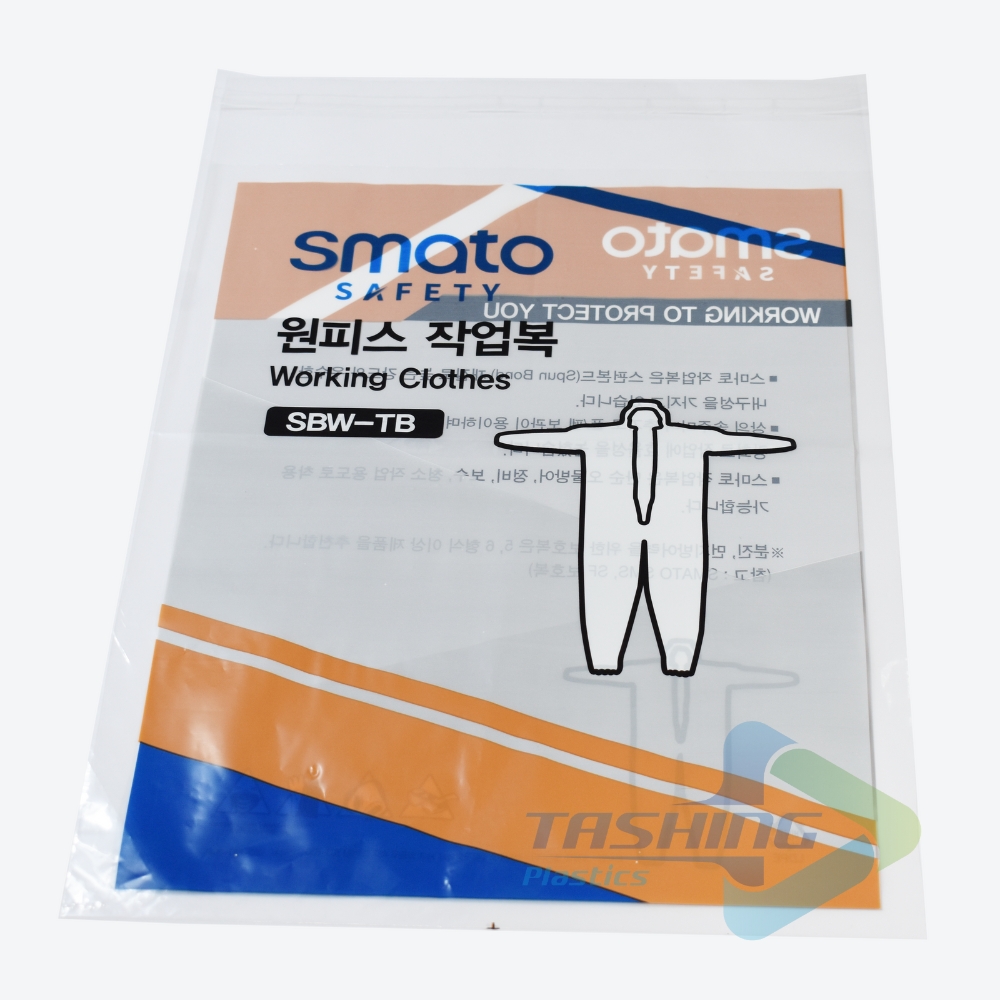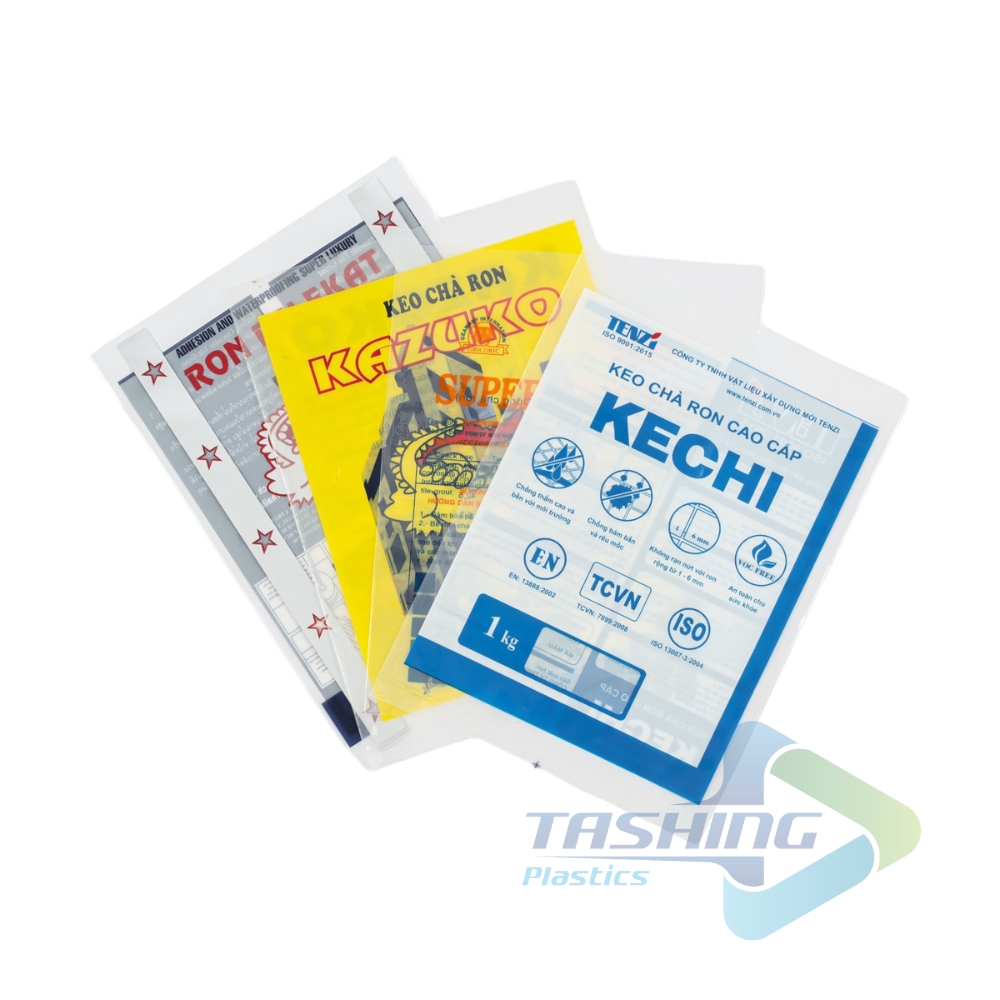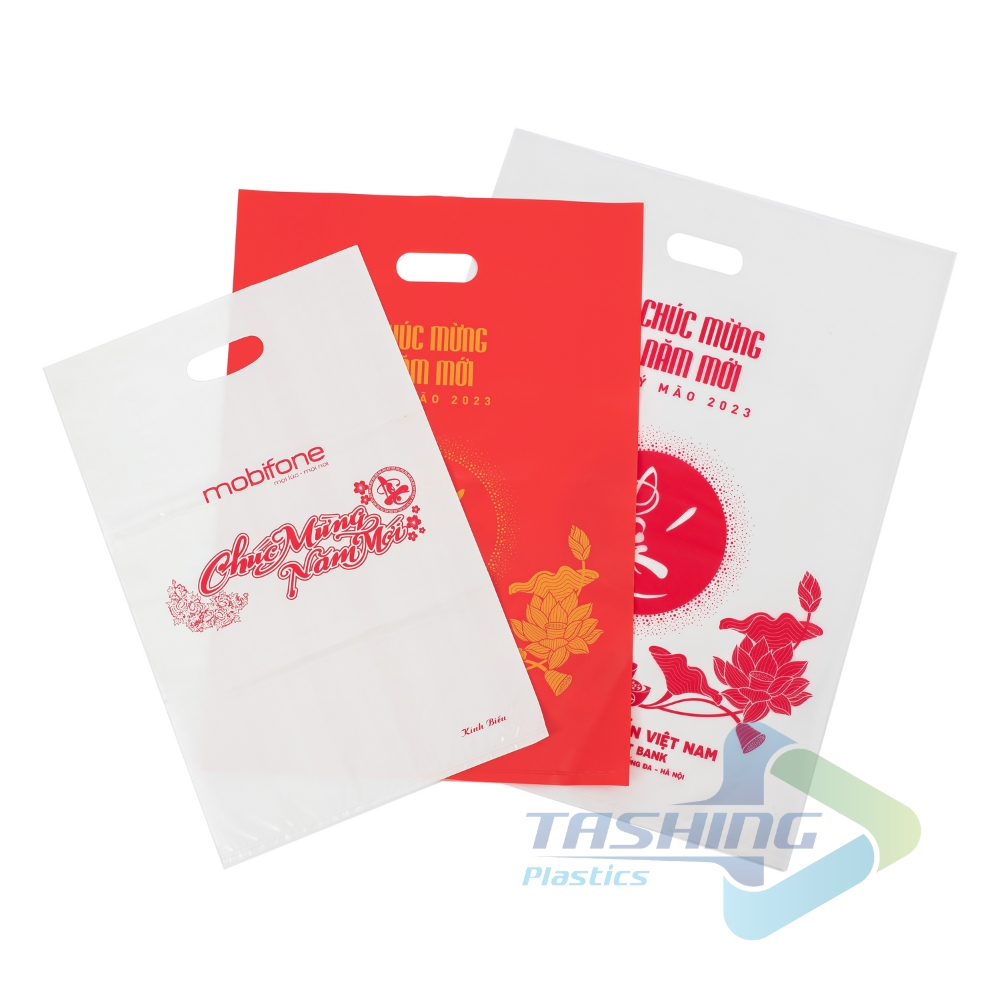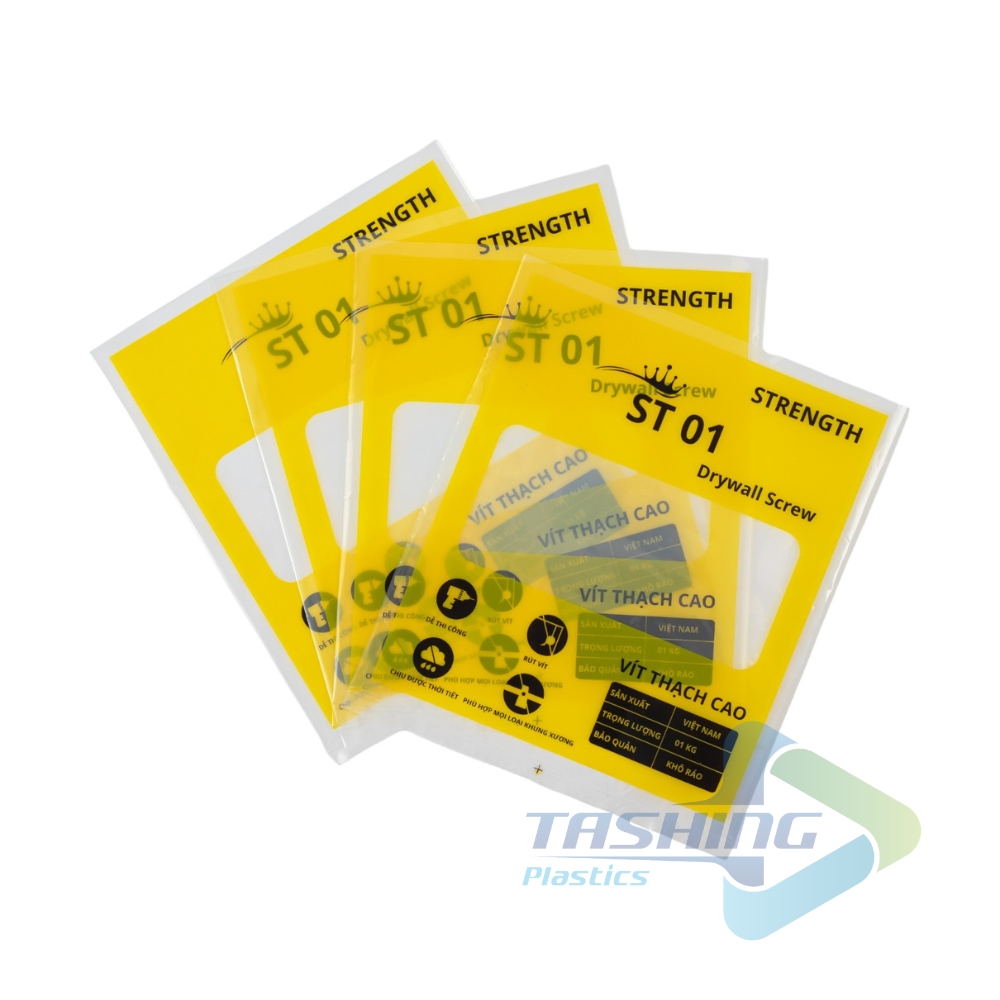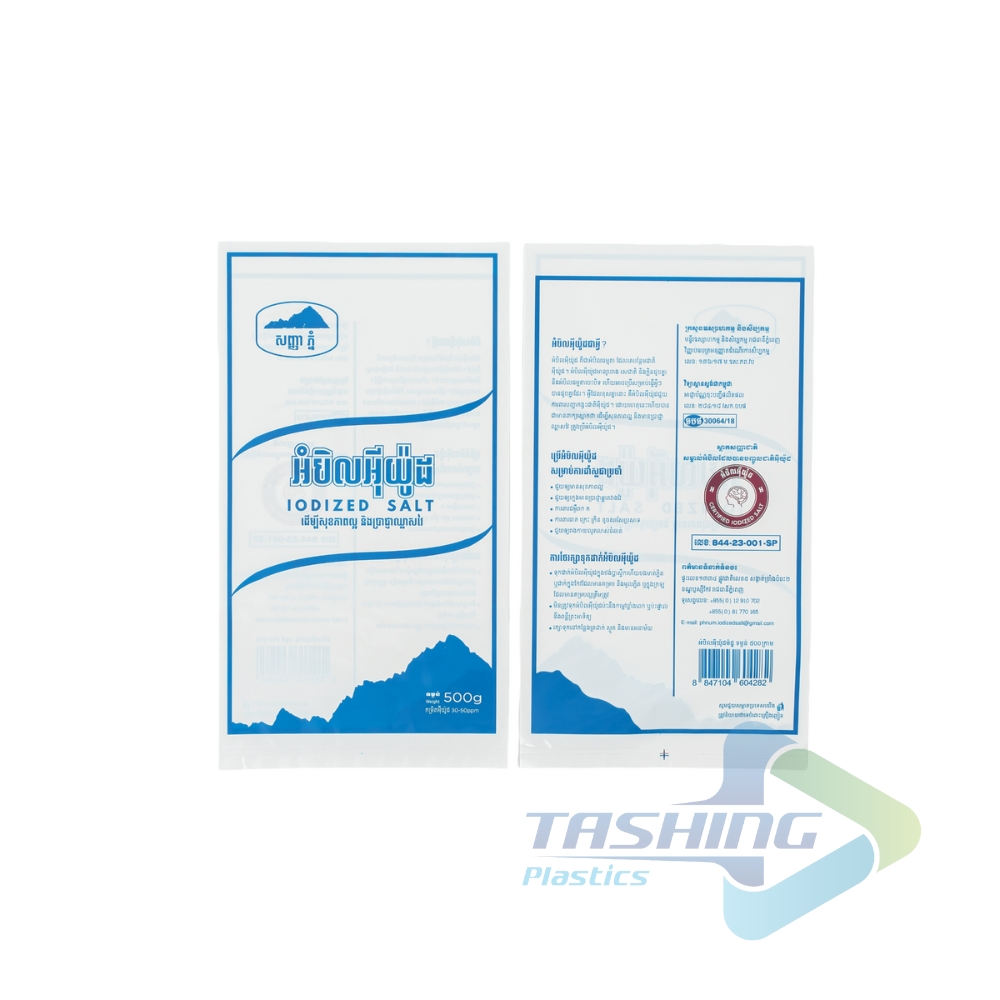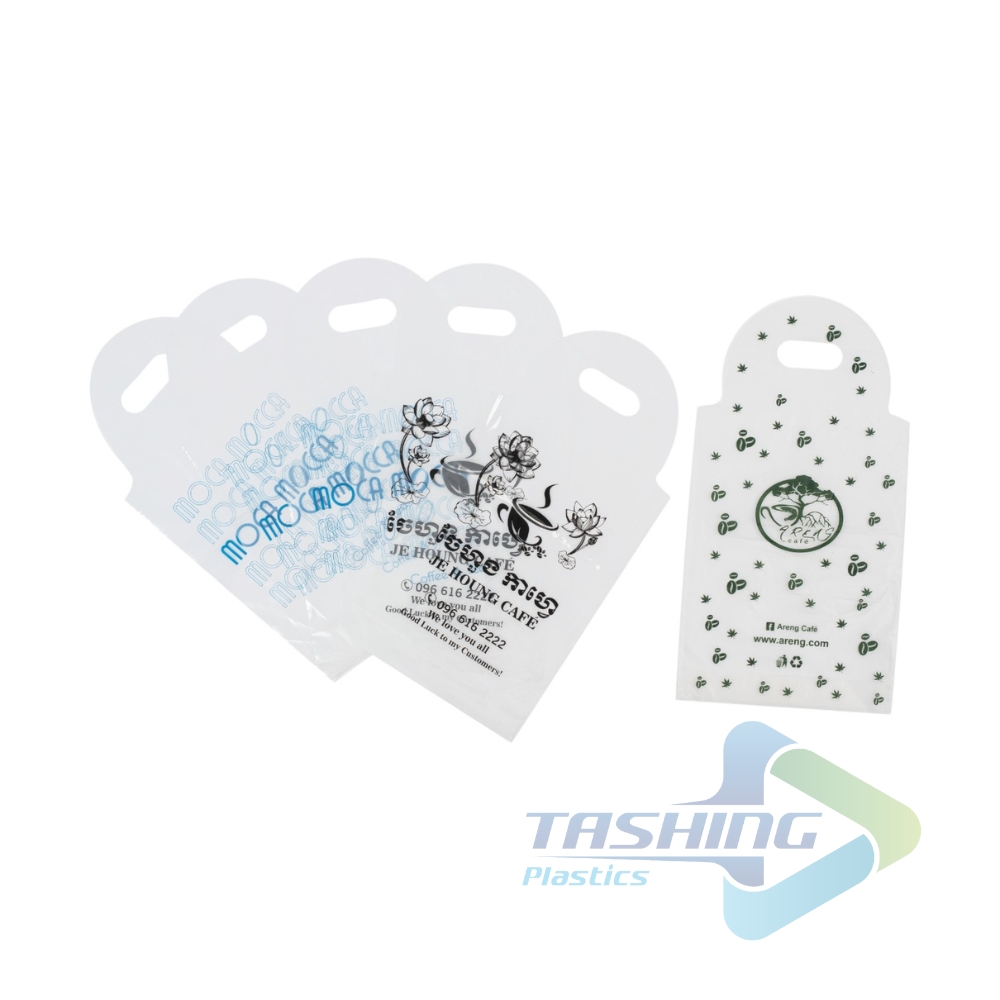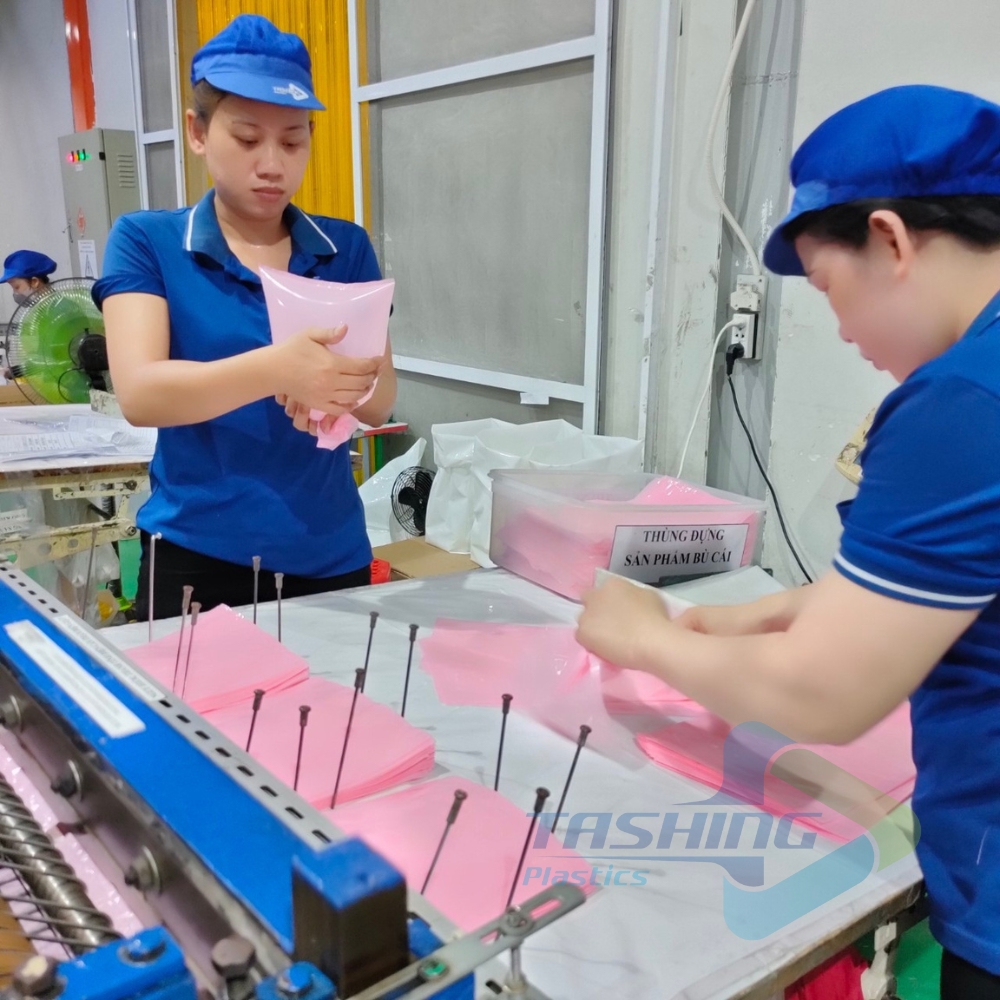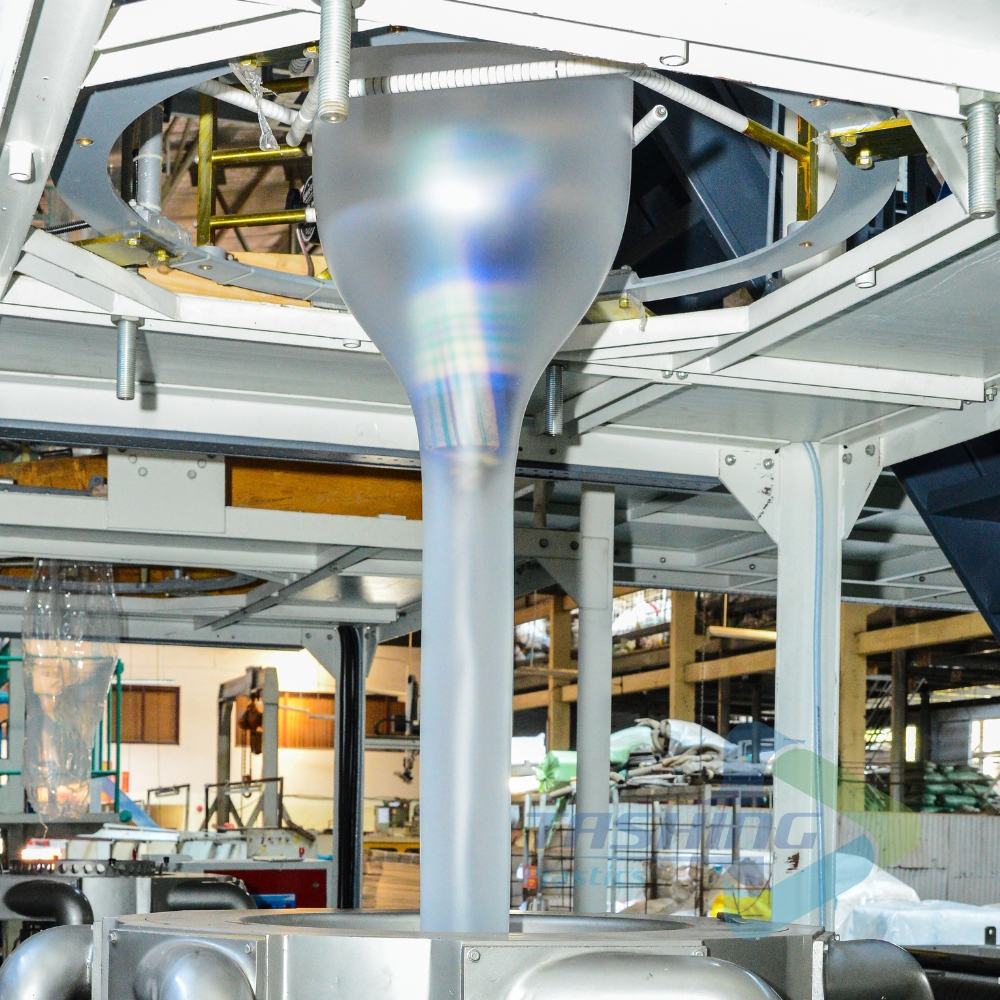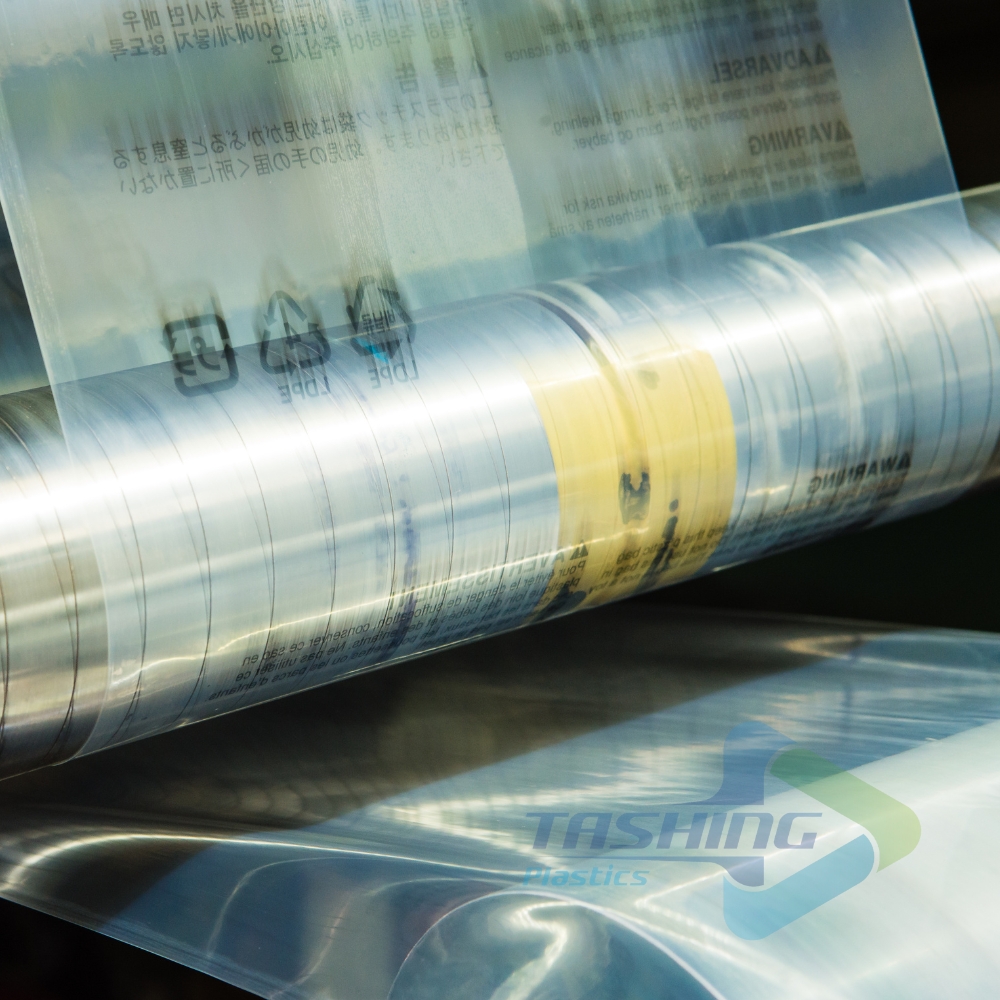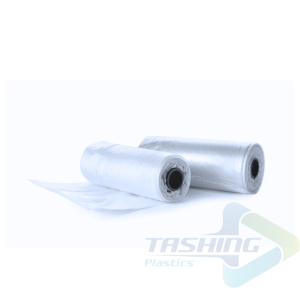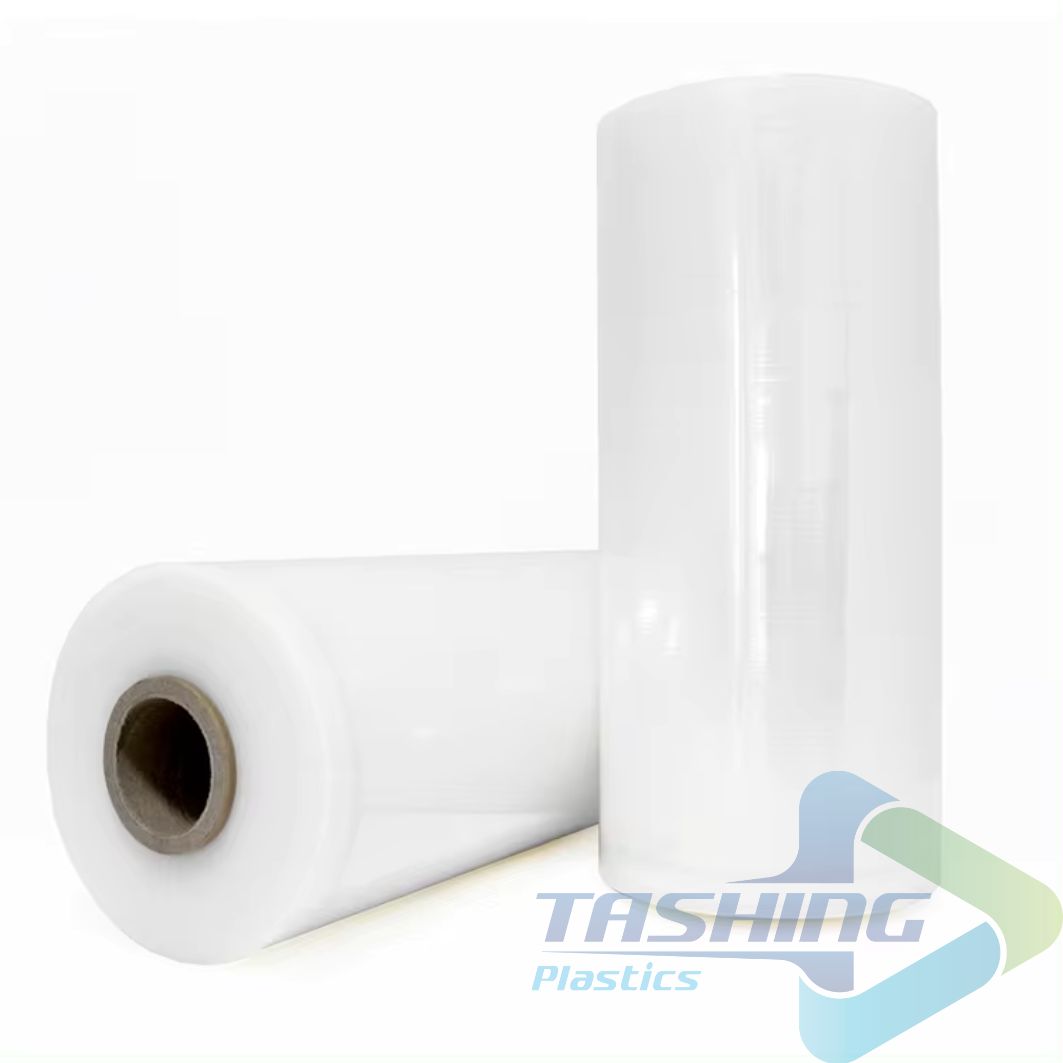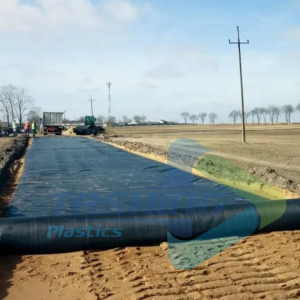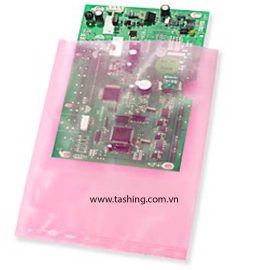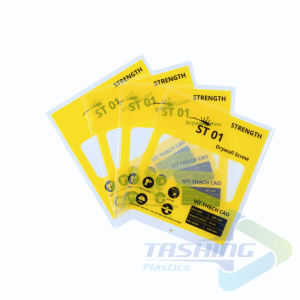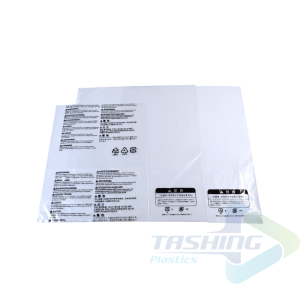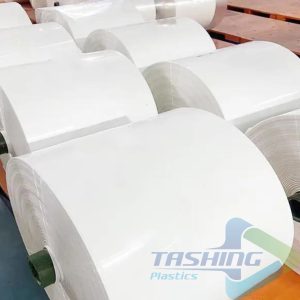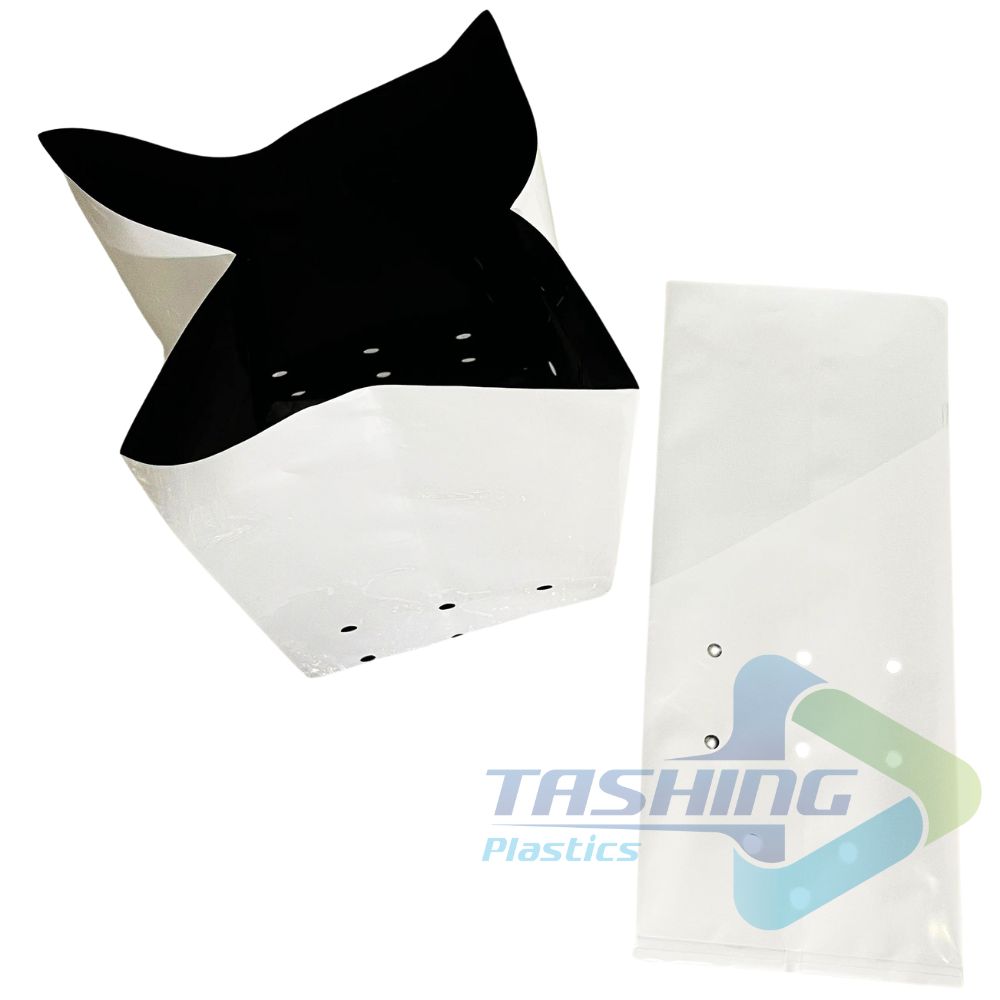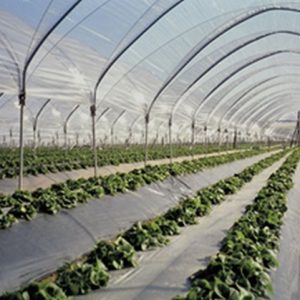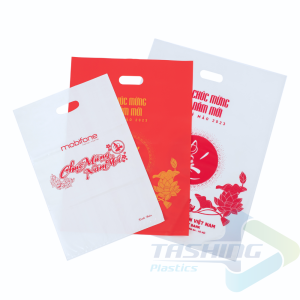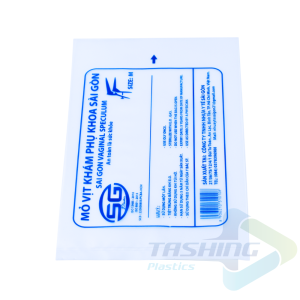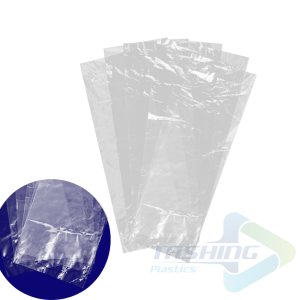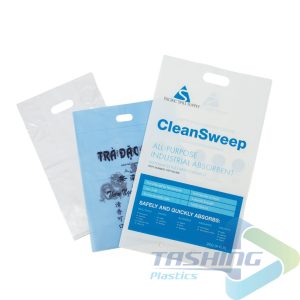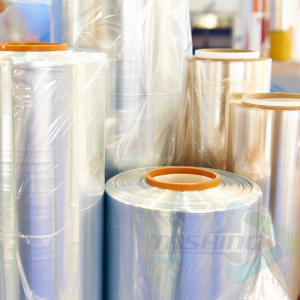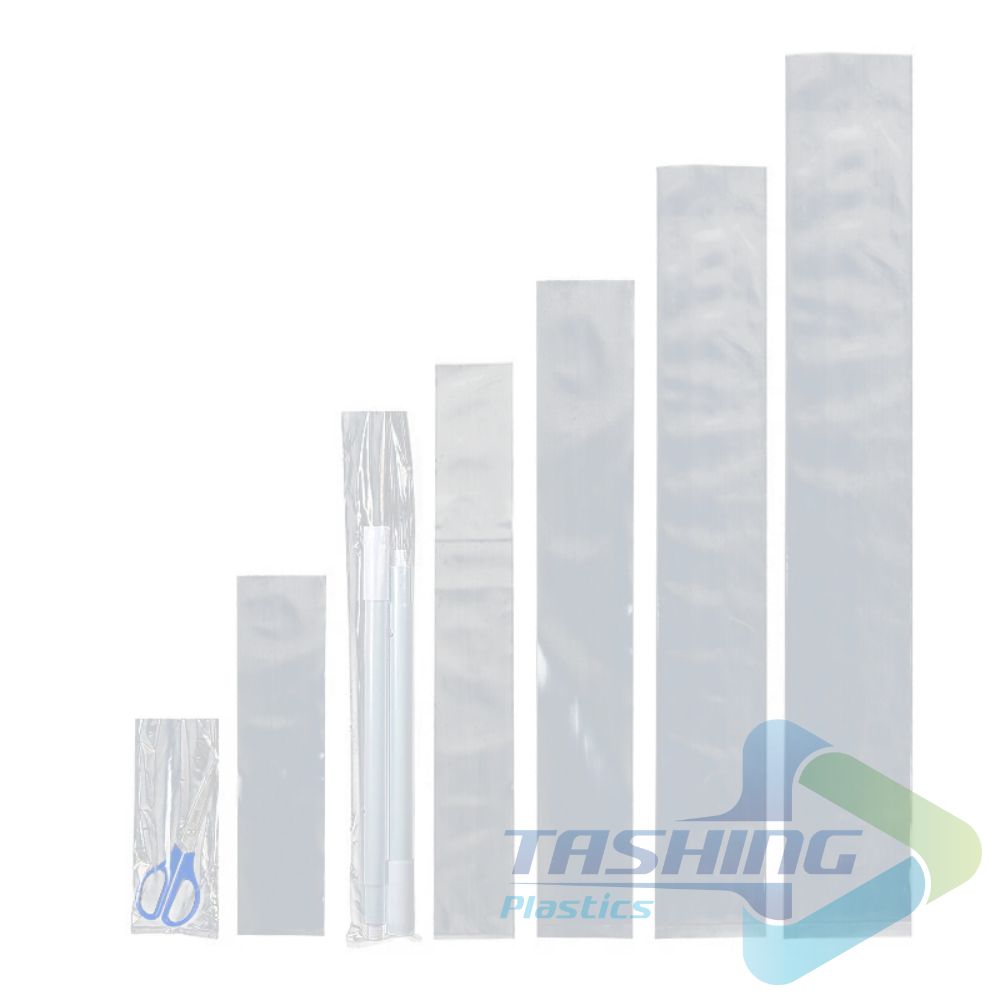Custom-Made PE Bags
Contact
| Functionality: | PE bags have high durability, waterproofing capabilities, and good load-bearing strength. They are often designed in various sizes and shapes. |
| Materials: | LLDPE (Linear Low-Density Polyethylene), LDPE (Low-Density Polyethylene), HDPE (High-Density Polyethylene). |
| Sizes: | Ranging from 2.5 cm to 220 cm. |
| Thickness: | Options range from 20 to 160 microns. |
| Colors: | Transparent white, opaque white, or as per customer request. |
| Features: | Used for packaging food, daily goods, and industrial products, protecting items from dust and moisture. |
| Packaging: | Bundled in 25 kg or as requested by customers |
- Description
Description
In an era where brand and customer experience are paramount, custom-made PE bags have become a smart and effective packaging solution for businesses. With high customization capabilities regarding design, size, material, and printing, PE plastic bags are not merely tools for product protection but also vehicles for conveying brand messages, enhancing brand recognition, and building customer loyalty.
What Are Custom-Made PE Bags?
Custom-made PE bags are a type of plastic bag produced based on specific customer requirements. Instead of purchasing readily available bags on the market, customers can order PE bags with custom sizes, colors, thicknesses, logos, and information tailored to their needs.
Thanks to their durability and lightweight nature, waterproof and moisture-resistant capabilities, ease of printing, and reasonable cost, PE bags meet diverse packaging needs across consumer goods, food, industrial, and agricultural sectors. Particularly, with the advancement of blown film technology and custom printing, custom-made PE bags have ushered in a new era for the packaging industry, enabling businesses to easily create unique products that align with their brand and offerings.
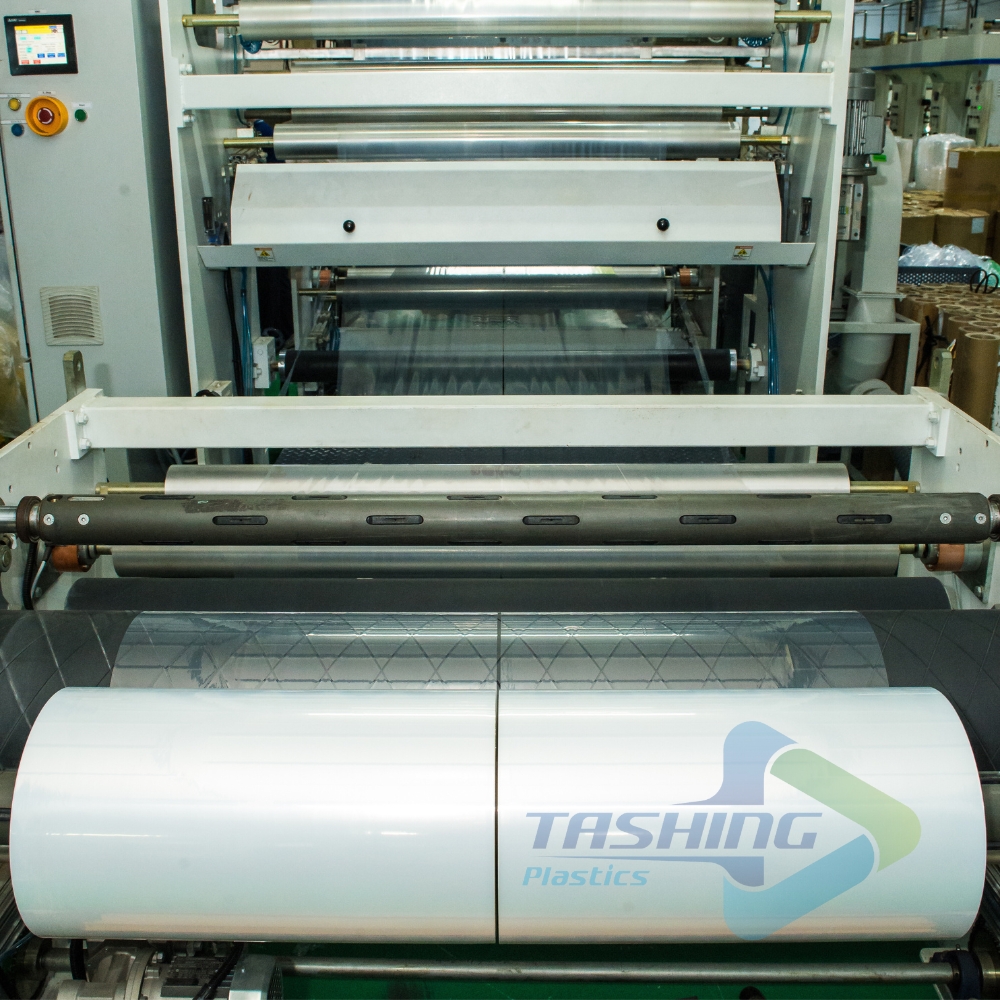
High Customization Capabilities in Design
Customization is a standout feature of custom-made PE bags. Businesses can adjust every detail of the bags, from size, shape, to color, material, and printing methods. This offers flexibility and optimization for packaging various products.
The ability to design diverse sizes and shapes allows businesses to choose the most suitable bag type for each product. From convenient handle bags, discreet zipper bags, to eye-catching stand-up bags, all can be tailored to snugly fit and effectively protect the product.
Moreover, businesses can combine these characteristics to create unique packaging solutions. For example, a fashion store might opt for a luxurious handle PE bag with a printed logo to add value to the product, while a food manufacturer might choose a zipper bag printed with product images and nutritional information to attract customer attention.
Custom Printing – Enhancing Brand Value
Custom printing on polyethylene bags plays a crucial role in brand building. Now, businesses are no longer limited by available printing templates and can unleash their creativity.
The colors and images on PE bags serve as effective tools to express brand identity. Logos, slogans, conveyed messages, product images – all can be printed sharply and attractively. Using consistent brand colors on packaging will enhance recognition, create coherence, and project professionalism for the business.
Material and Thickness of PE Bags
The polyethylene material used to produce PE bags is quite diverse, with LDPE and LLDPE being the most common types. Depending on the characteristics of the product and intended use, businesses can choose the appropriate material to ensure durability, water resistance, and product protection.
- Thickness from 10 to 20 microns: Usually used for packaging lightweight products like vegetables, fruits, and small daily items. This type is suitable for products that do not require high durability, such as supermarket bags and regular merchandise bags.
- Thickness from 20 to 50 microns: Offers better tear resistance and is widely used in sectors like food, medical, and light industrial goods. This is an ideal choice for products with sharp edges or medium weight.
- Thickness from 50 to 100 microns: Typically used for packaging heavy or bulky products such as electronic components, machinery, and metal products. This type is also commonly used for industrial waste bags and to cover large products to protect them from dirt and moisture.
- Thickness over 100 microns: This is the optimal choice for special applications requiring high protection. They are commonly used for packaging chemicals, liquids, or hazardous materials. Additionally, thick PE bags are used in construction to protect materials from environmental impacts like water and dirt.
Customers can choose the thickness of PE bags that suit their intended use to ensure efficiency and cost savings during production and transportation.
The thickness of PE bags is also a factor that requires careful consideration. This thickness depends on the weight and nature of the product inside. Fragile, deformable products need to be packaged in thicker PE bags to ensure safety. Conversely, for lightweight products, businesses can opt for thinner PE bags to save costs and minimize environmental impact.
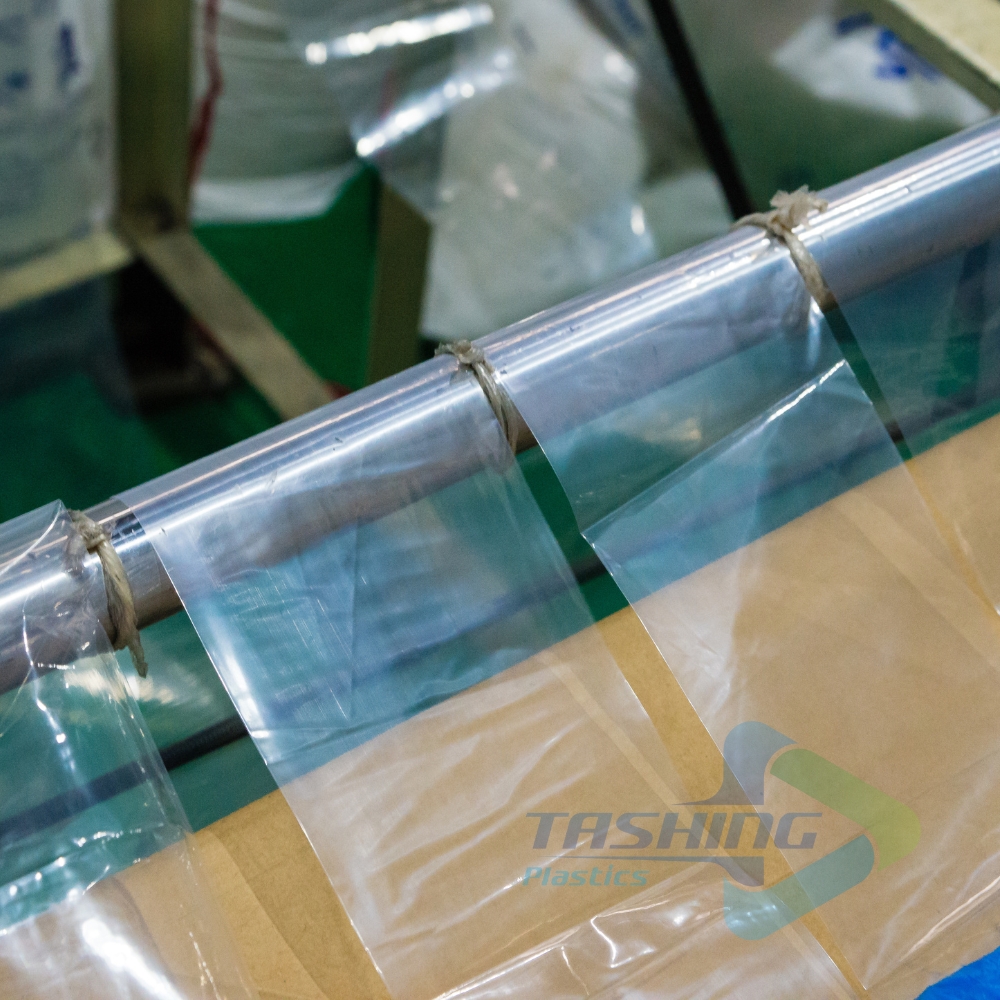
Outstanding Advantages of Custom-Made PE Bags
Custom-made PE bags offer many practical benefits for businesses, from enhancing packaging efficiency to building a positive brand image. Choosing the right PE bag not only ensures product safety but also demonstrates the business’s professionalism and customer care.
Optimizing the Packaging and Transportation Process
One of the most apparent benefits of custom-made PE bags is their ability to optimize the packaging process. Businesses can select custom sizes that fit each product, saving storage space and reducing material waste.
Furthermore, using appropriately designed PE bags simplifies the packaging process, enabling employees to work more quickly and efficiently. Especially for products with complex shapes, using custom-made PE bags will minimize product deformation and damage during transportation.
Thanks to the durable and lightweight properties of polyethylene, transporting goods becomes easier and more cost-effective. PE bags can withstand impacts, are waterproof, ensuring products remain safe throughout the transportation process, from the warehouse to the consumer.
Enhancing Brand Image and Recognition
PE bags are not just simple packaging materials; they are also effective tools for building and enhancing brand image. Printing logos, slogans, and conveyed messages on PE bags is an effective way to affirm the brand, create an impression on customers, and strengthen recognition.
Custom-made PE bags offer a more professional and impressive shopping experience for customers. An aesthetically pleasing PE bag with harmonious colors and clear messaging will create a sense of satisfaction and embed the brand in customers’ minds.
Moreover, using PE bags consistent in color and brand logo across all products will create unity and professionalism for the brand, making it easier for customers to recognize and differentiate it from other brands in the market.
Building Customer Loyalty
Custom-made PE bags are not only packaging tools but also effective communication channels with customers. By printing meaningful messages, attractive promotions, and contact information, businesses can create a tighter connection with customers.
Printing messages such as thank-you notes, promotional information, and product usage instructions enhances interaction between the brand and customers. This creates a sense of care and appreciation, boosting satisfaction and loyalty.
Additionally, PE bags can be used to promote loyalty programs and enticing promotions, encouraging customers to return for more purchases. Messages subtly and attractively conveyed on PE bags will create a ripple effect within the community, contributing to building a strong brand and increasing revenue for the business.
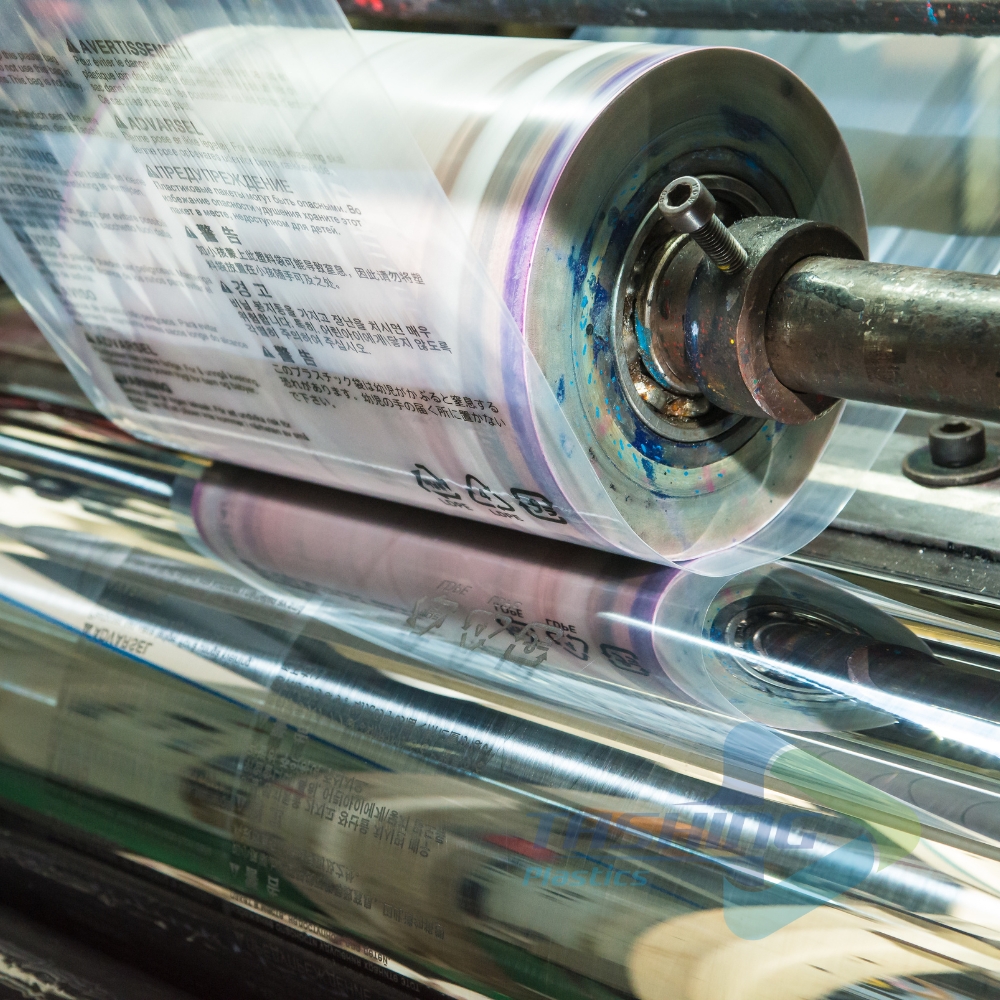
Producing PE Bags – Technical Process and Modern Technology
The production process of custom-made PE bags requires a harmonious combination of modern technology and professional techniques. Selecting materials, designing samples, manufacturing molds, blowing film, printing, and packaging all need to be conducted carefully and accurately to ensure product quality.
Choosing High-Quality Materials
The quality of PE bags heavily depends on the quality of the polyethylene material used. Reputable manufacturers prioritize using materials with clear origins, meeting food safety standards, and free from harmful substances affecting consumer health.
Choosing the right polyethylene material for each type of packaged product is crucial to ensuring product quality and longevity. For example, for food products, materials with high moisture and water resistance should be used to ensure food safety. In contrast, for industrial products, high-strength polyethylene material that can withstand impact is necessary.
Moreover, manufacturers are increasingly focusing on using recycled polyethylene materials or biodegradable polyethylene, contributing to environmental protection and meeting the demands of environmentally conscious customers.
Blown Film Technology & Custom Printing
Blown film technology is one of the most crucial steps in the PE bag production process. This technology helps create thin, flexible polyethylene sheets that can withstand force and heat well.
Modern blown film technology allows for the production of PE bags in various thicknesses, sizes, and shapes, catering to the needs of different industries. Additionally, applying advanced technologies can enhance the quality of PE bags, ensuring the products are durable, aesthetically pleasing, and provide better protection.
Custom printing is also a process that demands professionalism and high technical skills. Modern printing equipment allows for sharp, vibrant, and durable colors on PE bags, delivering high effectiveness in conveying messages and building brands.
Strict Quality Control
Quality control is a crucial step in producing custom-made PE bags. Reputable manufacturers always implement stringent testing procedures from raw materials to finished products to ensure quality and safety for consumers.
Quality standards such as ISO 9001, FDA, and RoHS are applied to control every step in the production process, from material selection to film blowing, printing, and packaging.
Product quality is regularly and continuously inspected, helping eliminate substandard products, ensuring that PE bags delivered to customers are always of the highest quality.
Popular Types of PE Bags & Their Applications
PE (Polyethylene) bags are among the most widely used packaging materials today, utilized extensively across various industries due to their flexibility, durability, and moisture resistance. Below are some common types of PE bags and their applications in different industries.
-
Chemical Industry
PE bags are primarily used in the chemical industry for two main purposes:
- Containing Chemicals: PE bags are often used to hold chemicals in powder, granule, or liquid form, including industrial and agricultural chemicals. They can withstand the effects of chemicals without decomposing.
- Protective Liners: PE bags are also used as protective liners to shield equipment, floors, and other surfaces from chemical corrosion, ensuring workplace safety.
-
Food Industry
In the food sector, PE bags play a crucial role in preserving and packaging:
- Packaging Raw Materials: Ingredients like flour, sugar, rice, and spices are often packaged in PE bags to keep them fresh and prevent mold.
- Packaging Processed Products: PE bags are also used to package processed food products like candies, instant noodles, and nuts, keeping them fresh and safe for consumption.
-
Construction Industry
The construction sector also utilizes PE bags for:
- Containing Building Materials: PE bags are used to hold various building materials like cement, sand, and gravel, facilitating easy transportation and storage.
- Protective Covers: They are also used as protective covers to shield construction projects from environmental factors such as rain and dust.
-
Agriculture
In agriculture, PE bags are used for:
- Packaging Seeds and Fertilizers: Seeds and fertilizers are commonly packed in PE bags, ensuring they remain dry and protected from pests.
- Planting and Harvesting: PE bags are used for harvesting crops, allowing farmers to transport produce easily.
-
Retail Sector
In retail, PE bags are commonly used for:
- Shopping Bags: Retailers use PE bags as shopping bags for customers to carry their purchases home. These bags can be customized with logos and designs to promote brand awareness.
- Packaging Products: Many products in supermarkets, including clothing, shoes, and cosmetics, are also packaged in PE bags, ensuring product safety and enhancing aesthetics.
-
Pharmaceuticals
In the pharmaceutical industry, PE bags are critical for:
- Packaging Medicines: PE bags are used to package medicines, keeping them safe and dry.
- Transporting Medical Equipment: Medical equipment is often packaged in PE bags for easy transportation and protection from environmental factors.
Conclusion
Custom-made PE bags are emerging as a smart solution for businesses striving for brand differentiation and customer satisfaction. Their high customization capabilities, coupled with the advantages of durability and cost-effectiveness, make them an optimal choice for various industries. By investing in custom PE bags, businesses not only enhance product protection but also effectively communicate their brand message, create memorable shopping experiences, and foster customer loyalty.

